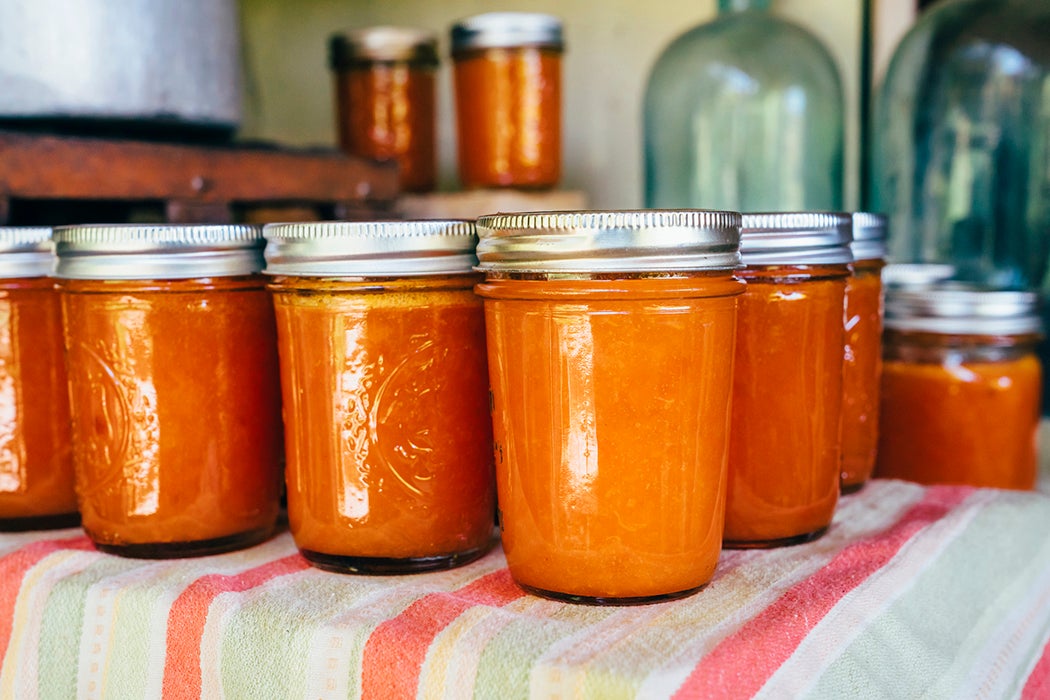With summer coming to a close, you might plan on putting up some of its bounty. Canning—preserving fruits and vegetables in glass jars—is a trendy way to flex your home ec skills while producing delicious jellies and jams. But the practice is anything but new, as scholar Danille Elise Christensen writes. It was once a critical part of the lives of Southern women.
Home canning has never been simply a necessity, says Christensen. Rather, it’s ripe with “social and aesthetic pleasures.” Though the work is difficult, and usually performed by women caught in an unequal division of household labor with men, it gave real satisfaction to women of the past.
Anyone who’s spent any time canning knows it’s no joke. It’s hot, sweaty work that’s preceded by backbreaking harvesting and preparation of fruits and veggies. But Christensen documents the ways it was worth it for Southern women of the past. There was the sense of accomplishment as jars cooled and snapped shut, a sense of self-sufficiency in knowing that one could produce their own food. And for women who faced hunger and economic instability, that satisfaction ran deep—a full pantry was a precious bulwark against starvation.
Many women prided themselves on putting up not just as much as they themselves could eat, but some to spare, a surplus mentality that was community-minded and that fostered personal networks and community eating. Those who had more than they could eat could afford to gift food to others, and that was a sign of prosperity and generosity that carried social weight.
Want more stories like this one?
And then there’s the pleasure of display that goes along with a row of brightly-colored jars. Canners “are no strangers to variety” and prized having a number of different ways to preserve a fruit or vegetable up their sleeves. Though women were encouraged to make their food to taste, leading to a wide variety of preferred flavorings and textures, the aesthetic of canning is one of “a uniform, harmonious, and visual regularity.” Uniform-looking jars have always been rewarded, as have fruits that look as fresh as possible in the jar. “Pretty” canned goods sparkle in the light, and cans are often intended for display on cellar shelves or state fair podiums. Some women even made a habit of visiting one another’s pantries to admire one another’s vibrant, beautifully stocked shelves.
“Paying attention to the talk of canners in the rural southern past and to its resonances in the present helps us to avoid assuming that play, pleasure, and beauty are the exclusive property of the young, urban, and well-to-do,” writes Christensen. Women of the past loved canning for the same reasons modern ones do—even if the the fruits of their tasty labor were a necessity and not just a novelty.







